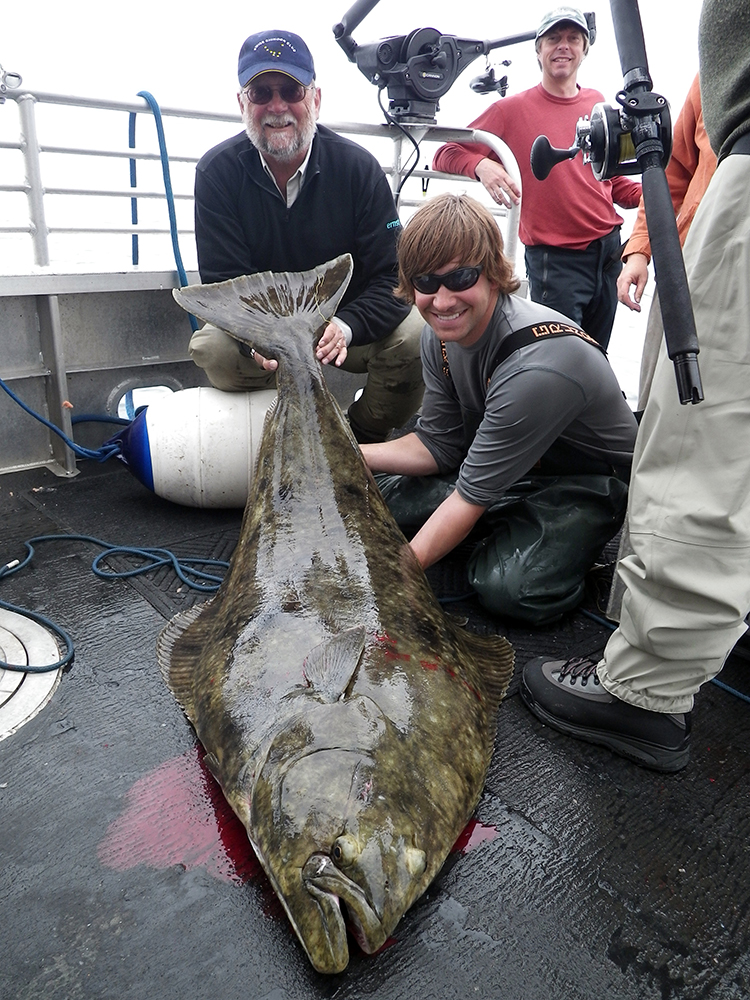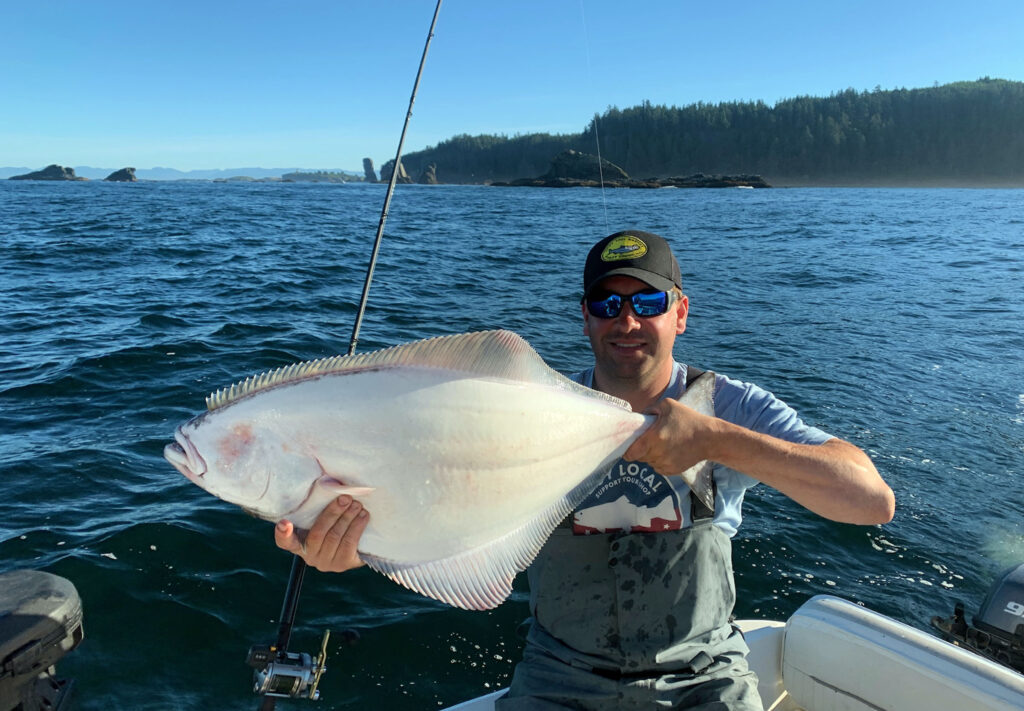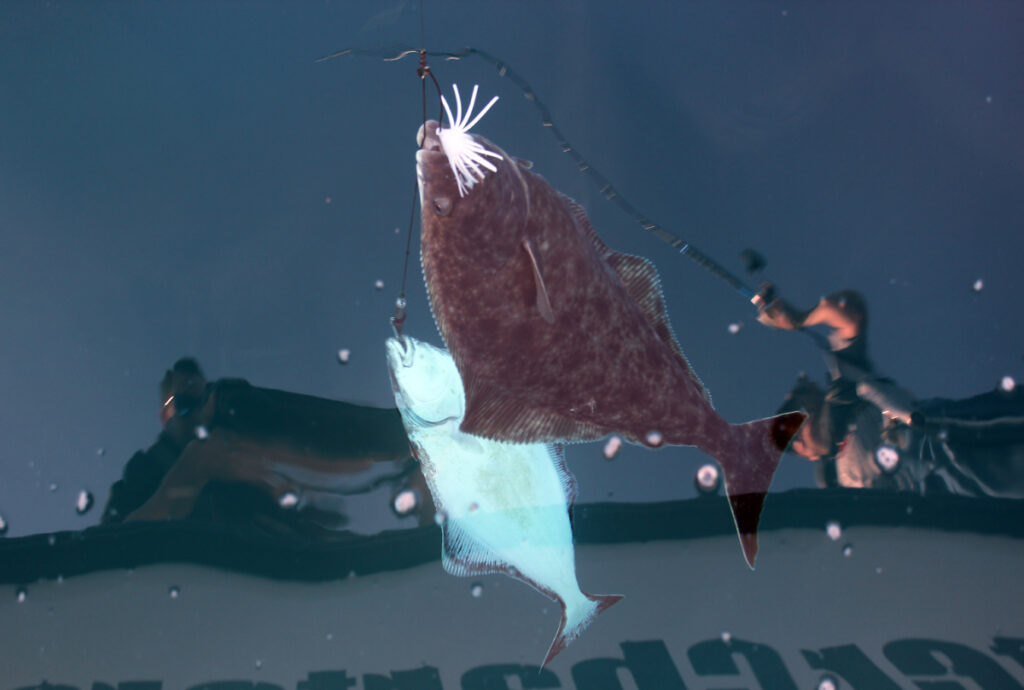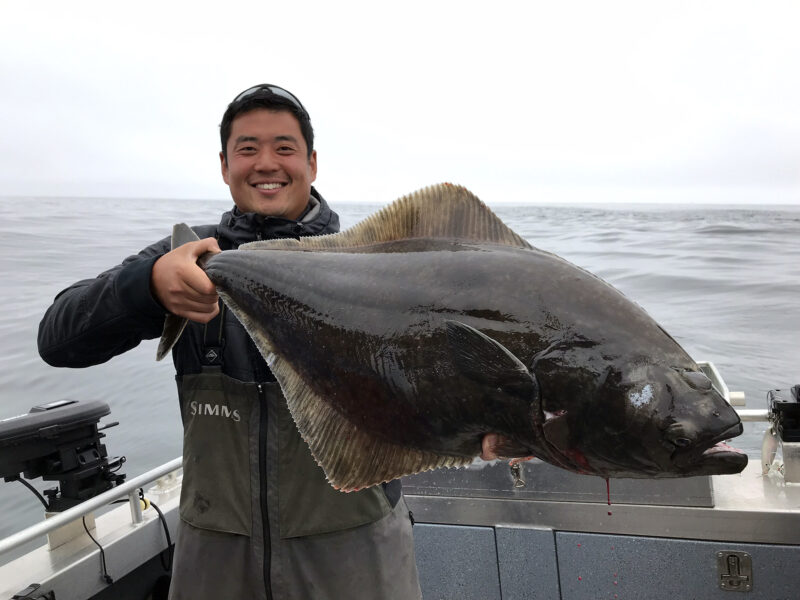Pacific Halibut bring a lot of excitement to our coastal ports, resorts and lodges. Spring and summer give us calm seas to explore the far edges of the continental shelf, remote reefs and banks where they live.
Pacific Halibut can tip the scales at 200 to 400 pounds, or Barndoor Halibut. Some areas host smallish 15 to 25 pound Halibut, or Chicken Halibut. But most of the times we have a realistic chance at landing a respectable 30 to 100 pounder. Which takes a lot of work but provides amazingly flavorful white fillets for the rest of the year.

Pacific Halibut Basics
Scientific Name: Hippoglossus Stenolepis
Geographic Range: Alaska to California
Typical Depth: 90′ to 900′
Typical Weight: 10 pounds to 200 pounds
Their range encompasses the entire Pacific Coast, from Alaska’s Bering Sea and Aleutian Island chain southward all the way down to Baja California. Halibut are abundant from the Aleutians down to Northern California. Their primary zone is from 90′ to 900′ depths. However, they spend most of their time laying on the seafloor, but will move up through the water column when they are feeding or spawning. They can live up up to 50 years old.
The largest Pacific Halibut caught are almost always female. As they tend to grow faster than the males. They are migratory and can travel great distances to feed.
How to Identify a Pacific Halibut
Pacific Halibut are relatively flat for their length and width. And have a diamond-shaped body. The upper half is brown to dark brown, the lower half that faces the seafloor is white. Both of a Pacific Halibut’s eyes are on the brown side. Their closest look-alike would be a Skate. Although a Halibut has a large mouth with small teeth, and the jaw can be seen from both the upper brown and lower white side of the fish. A Skate’s mouth is solely on it’s underside.

Where Pacific Halibut Live
I’ve caught Pacific Halibut in a pretty wide array of structures. But, a soft seafloor, such as sandy or gravelly bottom is preferred. On some of the offshore banks, it almost seems like they are laying on top of each other there are so many of them. But occasionally a true trophy-sized fish will get caught off a rocky pinnacle or reef, where they are most likely feeding.












 Seattle Fishing Report – August 2020
Seattle Fishing Report – August 2020
